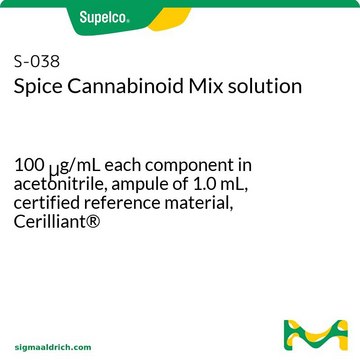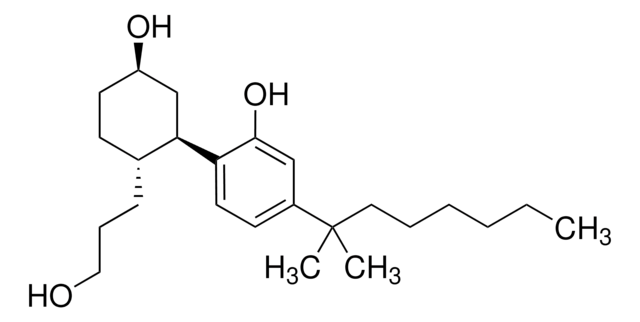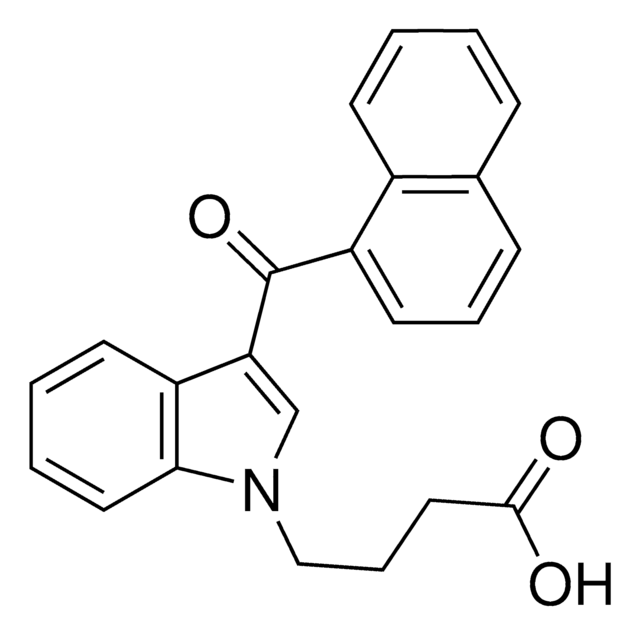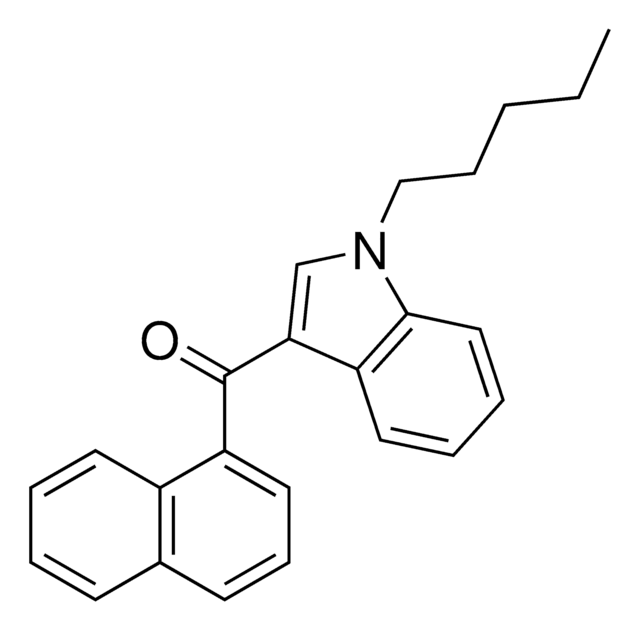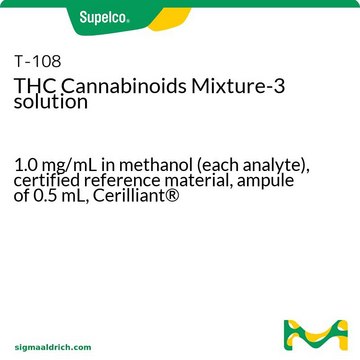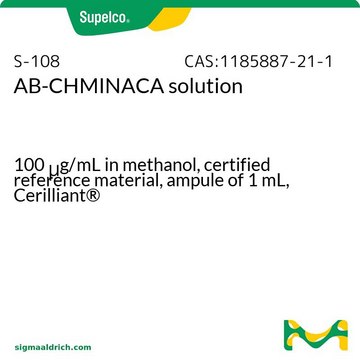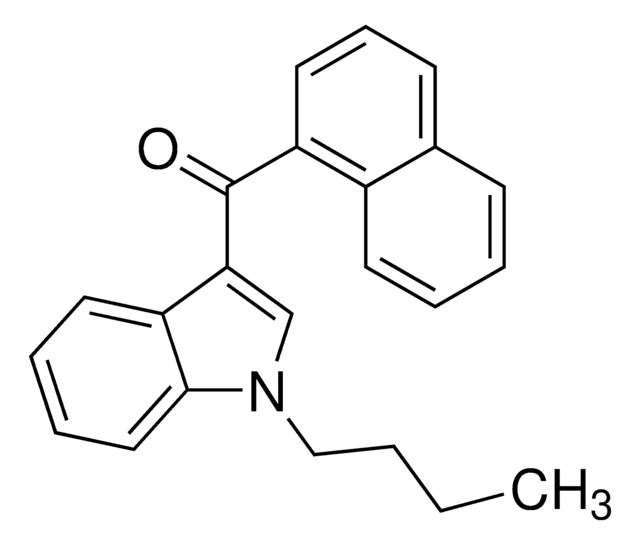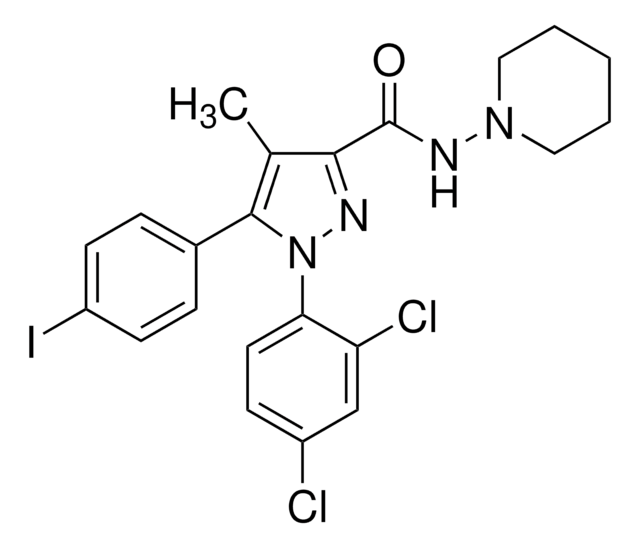Kluczowe dokumenty
S-024
HU-210 solution
100 μg/mL in methanol, ampule of 1 mL, (Spice Cannabinoid), certified reference material, Cerilliant®
About This Item
Polecane produkty
klasa czystości
certified reference material
Poziom jakości
Formularz
liquid
Właściwości
Snap-N-Spike®/Snap-N-Shoot®
opakowanie
ampule of 1 mL
producent / nazwa handlowa
Cerilliant®
drug control
Narcotic Licence Schedule E (Switzerland)
stężenie
100 μg/mL in methanol
metody
gas chromatography (GC): suitable
liquid chromatography (LC): suitable
Zastosowanie
forensics and toxicology
forensics and toxicology
Format
single component solution
temp. przechowywania
−20°C
ciąg SMILES
CCCCCCC(C)(C)c1cc(O)c2[C@@H]3CC(CO)=CC[C@H]3C(C)(C)Oc2c1
InChI
1S/C25H38O3/c1-6-7-8-9-12-24(2,3)18-14-21(27)23-19-13-17(16-26)10-11-20(19)25(4,5)28-22(23)15-18/h10,14-15,19-20,26-27H,6-9,11-13,16H2,1-5H3/t19-,20-/m1/s1
Klucz InChI
SSQJFGMEZBFMNV-WOJBJXKFSA-N
Opis ogólny
In July, 2009, the US Drug Enforcement Agency (DEA) placed HU-210 on its Drugs and Chemicals of Concern list. Since HU-210′s placement on this list, DEA has reported seizures of Spice herbal mixtures in Ohio and Florida. HU-210 is currently listed as a Schedule I controlled substance. In recognition of this regulatory challenge, Cerilliant supplies its certified HU-210 reference standard in a convenient, quantitative, DEA-exempt solution.
Informacje prawne
Zastosowanie
produkt powiązany
Hasło ostrzegawcze
Danger
Zwroty wskazujące rodzaj zagrożenia
Zwroty wskazujące środki ostrożności
Klasyfikacja zagrożeń
Acute Tox. 3 Dermal - Acute Tox. 3 Inhalation - Acute Tox. 3 Oral - Flam. Liq. 2 - STOT SE 1
Organy docelowe
Eyes
Kod klasy składowania
3 - Flammable liquids
Klasa zagrożenia wodnego (WGK)
WGK 1
Temperatura zapłonu (°F)
49.5 °F - closed cup
Temperatura zapłonu (°C)
9.7 °C - closed cup
Wybierz jedną z najnowszych wersji:
Certyfikaty analizy (CoA)
Przepraszamy, ale COA dla tego produktu nie jest aktualnie dostępny online.
Proszę o kontakt, jeśli potrzebna jest pomoc Obsługa Klienta
Masz już ten produkt?
Dokumenty związane z niedawno zakupionymi produktami zostały zamieszczone w Bibliotece dokumentów.
Klienci oglądali również te produkty
Chromatograms
application for HPLCapplication for HPLCNasz zespół naukowców ma doświadczenie we wszystkich obszarach badań, w tym w naukach przyrodniczych, materiałoznawstwie, syntezie chemicznej, chromatografii, analityce i wielu innych dziedzinach.
Skontaktuj się z zespołem ds. pomocy technicznej